Great Depression
Causes of the Great Depression
The Great Depression was a severe worldwide economic depression that took place mostly during the 1930s, beginning in the United States. The timing of the Great Depression varied across the world; in most countries, it started in 1929 and lasted until the late 1930s. It was the longest, deepest, and most widespread depression of the 20th century.
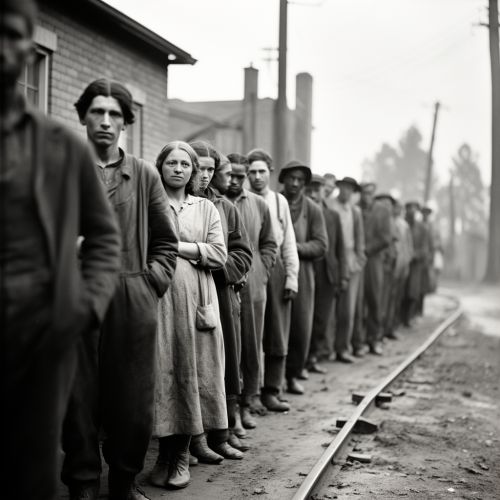
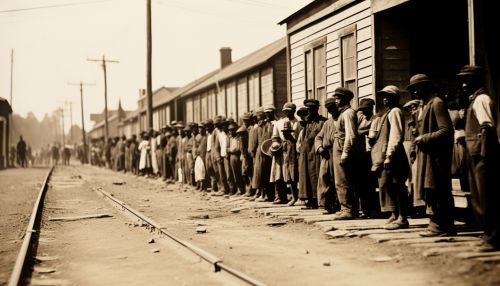
The depression originated in the U.S., after a major fall in stock prices that began around September 4, 1929, and became worldwide news with the stock market crash (known as Black Tuesday). The Great Depression had devastating effects in both rich and poor countries. Personal income, tax revenue, profits and prices dropped, while international trade fell by more than 50%. Unemployment in the U.S. rose to 25%, and in some countries rose as high as 33%.
Economists and historians point to the stock market crash of October 1929 as the start of the downturn. But the truth is that many things caused the Great Depression, not just one single event.
Stock Market Crash of 1929
During the 1920s, the U.S. stock market underwent rapid expansion, reaching its peak in August 1929, after a period of wild speculation. By then, production had already declined and unemployment had risen, leaving stocks in great excess of their real value. Among the other causes of the eventual market collapse were low wages, the proliferation of debt, a struggling agricultural sector and an excess of large bank loans that could not be liquidated.


Stock prices began to decline in September and early October 1929, and on October 18 the fall began. Panic set in, and on October 24—Black Thursday—a record 12,894,650 shares were traded. Investment companies and leading bankers attempted to stabilize the market by buying up great blocks of stock, producing a moderate rally on Friday. On Monday, however, the storm broke anew, and the market went into free fall. Black Monday was followed by Black Tuesday (October 29, 1929), in which stock prices collapsed completely.
Banking Panics and Monetary Contraction
The stock market crash of 1929 and the ensuing Great Depression certainly altered an already-changing economic landscape and made a significant impact on the banking industry and monetary policy. During the first 10 months of 1930 alone, 744 US banks failed. (In all, 9,000 banks failed during the 1930s). By 1933, depositors saw $140 billion disappear through bank failures.
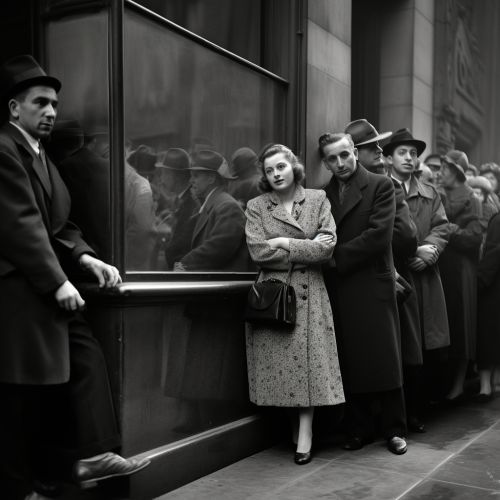
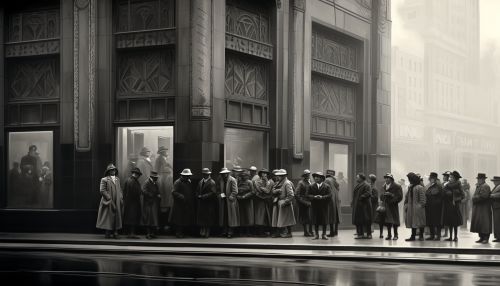
Bank failures led to the loss of billions of dollars in assets. Outstanding debts became heavier, because prices and incomes fell by 20–50% but the debts remained at the same dollar amount. After the panic of 1929, and during the first 10 months of 1930, 744 US banks failed. (In all, 9,000 banks failed during the 1930s). By 1933, depositors saw $140 billion disappear through bank failures.
The Gold Standard
Some economic studies have indicated that just as the downturn was spread worldwide by the rigidities of the Gold Standard, it was suspending gold convertibility (or devaluing the currency in gold terms) that did the most to make recovery possible. Every major currency left the gold standard during the Great Depression. Great Britain was the first to do so. Facing speculative attacks on the pound and depleting gold reserves, in September 1931 the Bank of England ceased exchanging pound notes for gold and the pound was floated on foreign exchange markets.


Great Britain, Australia, and South Africa all followed the gold standard. Yet the greatest blow to the gold standard was Germany’s decision to leave in July 1931. The interwar partially-backed gold standard was inherently unstable, because of the conflict between the expansion of liabilities to foreign central banks and the resulting deterioration in the Bank of England's reserve ratio.
Effects of the Great Depression
The effects of the Great Depression were huge across the world. Not only did it lead to the New Deal in America but more significantly, it was a direct cause of the rise of extremism in Germany leading to World War II.
Unemployment
Unemployment in the United States rose to 25% and in some countries rose as high as 33%. Cities all around the world were hit hard, especially those dependent on heavy industry. Construction was virtually halted in many countries. Farming communities and rural areas suffered as crop prices fell by approximately 60%.
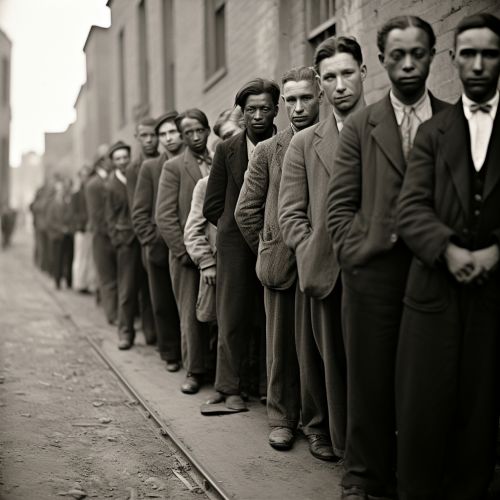

Facing plummeting demand with few alternative sources of jobs, areas dependent on primary sector industries such as mining and logging suffered the most. Even after the Wall Street Crash of 1929 optimism persisted for some time; John D. Rockefeller said that "These are days when many are discouraged. In the 93 years of my life, depressions have come and gone. Prosperity has always returned and will again."
The Dust Bowl
The depression was compounded by the Dust Bowl, a period of severe dust storms that greatly damaged the ecology and agriculture of the American and Canadian prairies during the 1930s. The Dust Bowl was a result of a series of dust storms in the central United States and Canada from 1931 to 1939, caused by decades of inappropriate farming techniques.

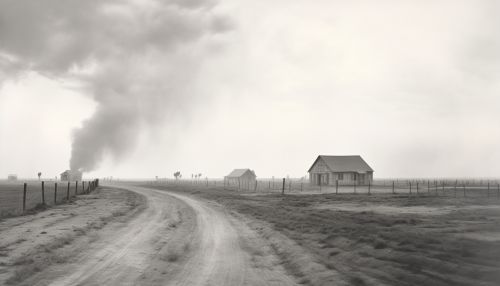
The Dust Bowl forced tens of thousands of families to abandon their farms. Many of these families, who were often known as "Okies" because so many of them came from Oklahoma, migrated to California and other states, where they found conditions little better than those they had left.
Rise of Extremism
The Great Depression has been linked to the rise of extremism in Germany. The economic turmoil and human suffering of the Great Depression benefited the Nazi Party - by eroding faith in democratic government, discrediting the Weimar Republic and providing an environment in which radical ideologies can flourish.


The Nazis presented themselves as uniquely capable of handling the crisis, and their popularity grew. By 1933, the Nazi Party was the largest elected party in the German Reichstag, which led to Hitler's appointment as Chancellor on 30 January 1933.
Recovery from the Great Depression
The recovery from the Great Depression was a long and slow process. In the United States, recovery began in early 1933, but the U.S. did not return to 1929 GNP for over a decade and still had an unemployment rate of about 15% in 1940, albeit down from the high of 25% in 1933.
The New Deal
In the United States, the Great Depression brought about significant changes in government policy and the creation of new programs, collectively called the New Deal. The New Deal's most immediate goals were short-range relief and immediate recovery. These were the immediate goals of the Hundred Days Congress, which met March 9–June 6, 1933.
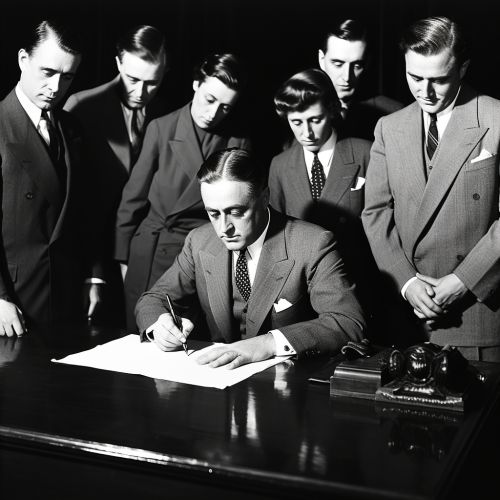

Long-range goals of permanent recovery and the reform of institutional abuses and practices that had produced the Depression came as part of the Second New Deal, from November 1933 to 1939. The "First New Deal" of 1933 was aimed at short-term recovery programs for all groups.
World War II and Recovery
The common view among most economists is that a series of fiscal stimulus packages introduced by President Franklin D. Roosevelt's administration during the New Deal were the primary factor that ended the Great Depression. Most agree that the New Deal alone was not enough to end the Great Depression and that it was the massive spending during World War II that cleaned out the balance sheets of big business and returned the economy to full employment.
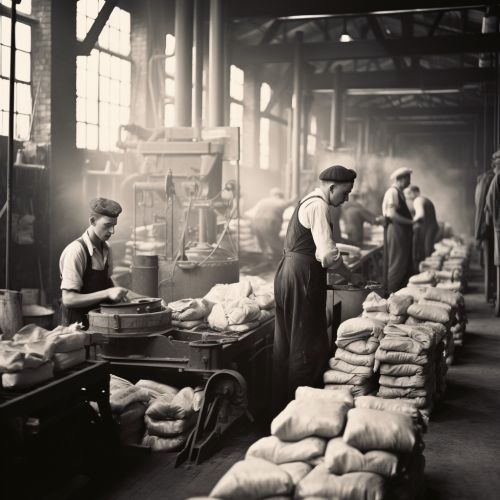
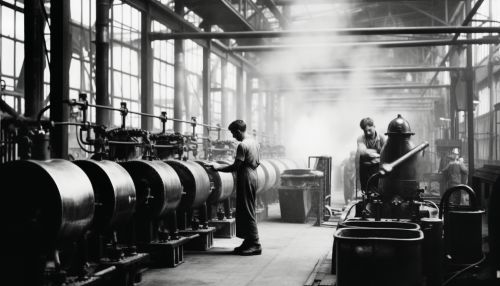
The economy was over the worst by 1933 but remained stagnant until the start of World War II. This is often credited with ending the Great Depression. The massive amounts of spending by the government during the war helped to end unemployment.
